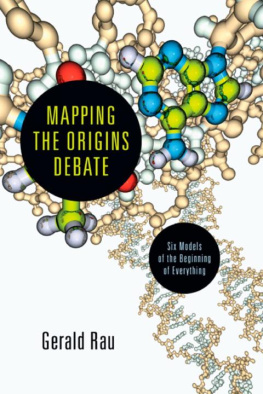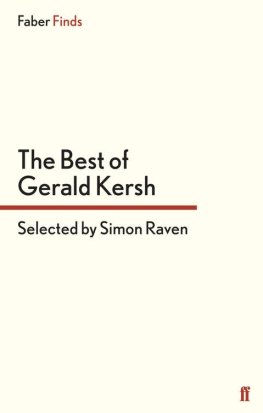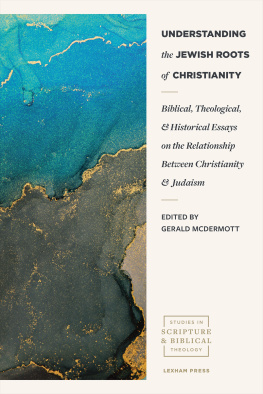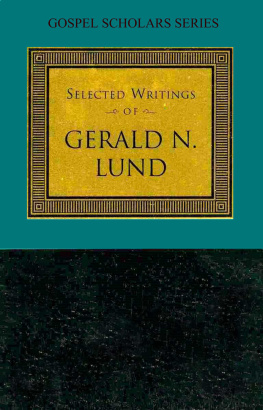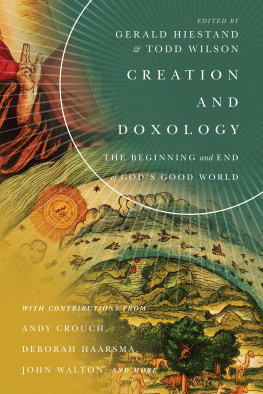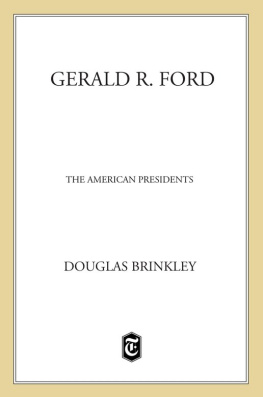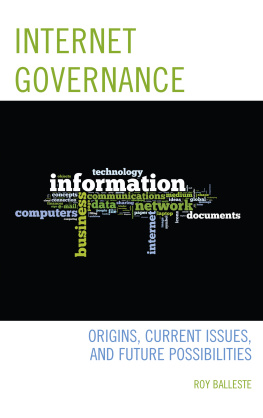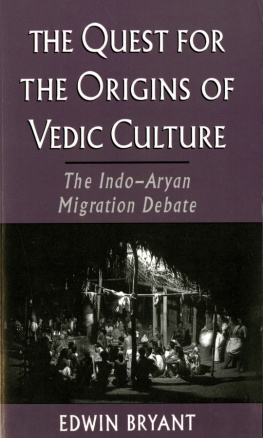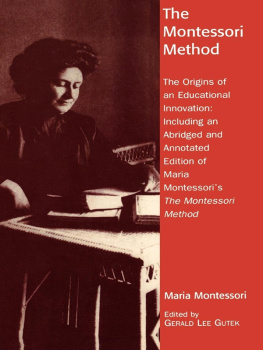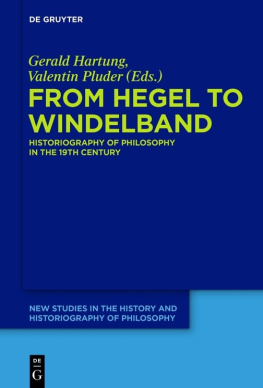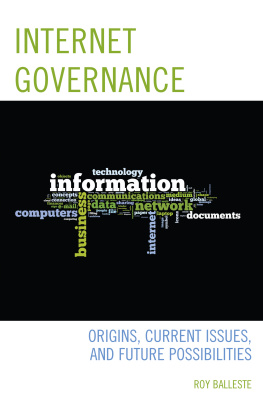"It's about time a book like this hit the market! No caricatures of `them,' no hackneyed stereotypes of `the other side,'this is an honest assessment of where the debate lies. Although an expert himself, Dr. Rau shows his seasoned pedagogical skills and does not lose nonspecialist readers in unnecessary technical jargon. If you've suspected that there are more options than just creationism or philosophical materialism, this book is for you.,,
NICHOLAS G. PIOTROWSKI, Crossroads Bible College
"Eminently qualified with advanced degrees in genetics and science education from top universities, Dr. Gerald Rau not only aims to present the arguments for each position as neutrally as possible, he actually succeeds where angels, let alone countless other scholars, have feared or failed to tread. His thoughtful Christian voice rings clearly in the midst of an often shrill debate where too many are unwilling to acknowledge how their respective worldviews shape their interpretations of scientific data."
ROBERT OSBURN, executive director, Wilberforce Academy





To my beloved wife, D. Victoria Rau, without whose encouragement this book would not have been possible
.............. 9
................ 11
............. 15
...... 19
.......... 31
.......... 57
............. 82
............ 101
........... 129
....... 153
.... 175
............... 191
.... 193
.. 206
............... 209
............... 223
.............. 233
......... 237


The first to present his case seems right, till another comes forward and questions him.
PROVERBS 18:17 NIV 1984
Thousands of books have been written on evolution and creation, so how is this one different and why should you read it? Most authors try to convince readers that their position is correct. A few books present a dialogue between proponents of two or more views. Many attack another position without presenting a comprehensive scientific model with better explanatory power. The diversity of approaches and failure to state axiomatic assumptions makes it difficult for the novice reader to understand, much less evaluate, the arguments. This book presents the full range of possible models and demonstrates how our religious and philosophical presuppositions, rather than the evidence, dictate our preference.
Currently there are at least six major classes of models explaining the origin of the universe, life, species and humans, but few people can clearly describe more than two or three of them. In this book you will find (i) an overview of the models, (2) the evidence that each uses to justify its position, and (3) what data each refuses to allow as evidence and why. As much as humanly possible, I will try to present each of the positions objectively, using neutral language, in order to give the reader a chance to evaluate the arguments in the absence of rhetoric, positive or negative. I will also argue that each, viewing the evidence from a different perspective, sheds important light on the subject.
When I was in high school, a speaker came to our church youth group to talk about how the biblical flood explained all the fossil evidence, disproving evolution. I was convinced. When I got to college, evolution was rigorously defended. I was confused. I had been told that this was a scheme of the devil, yet the evidence seemed to point to gradual change in life forms over a long period of time. I read a number of books, each with a convincing argument, but none that for me resolved the apparent conflict between science and religion. Eventually I set the issue aside to be examined later. Many in the church today can undoubtedly relate to my dilemma.
Although I intuitively knew there must be a middle position that reconciled the two, I did not know where to find it. Not until after I had completed my doctorate in plant breeding from Cornell University and moved to Taiwan did I begin to find an answer. There I was introduced to David Newquist, a professor of physics at Tunghai University, who taught a course on faith and science. He pointed me to a number of resources that confirmed others had followed the same path I had, coming to similar conclusions, and had sound evidence and arguments to back up their ideas.
About that time I began teaching at Lincoln American School, later renamed the American School in Taichung. I struggled with how to teach evolution, and read eagerly about old-earth creation and theistic evolution positions. Gradually I developed a table outlining four, five and eventually six models of origins and what they believed. At the same time I began thinking about the nature of science, how science is actually done, and realized the shortcomings of what I had been taught about the scientific method. This gradually became the unifying focus of the science curriculum, and the basis for teaching origins.
In my naivete I thought I had stumbled on something unique, only to find when I tried to publish that there was a whole literature on the nature of science in science teaching which I was not familiar with.' his reflects the problem in the field of origins as well. The question is so broad, with so many aspects and evidence from so many disciplines that no one can be familiar with all the literature, let alone be an expert in every area. Religion and philosophy come head to head with geology, astronomy, biochemistry and genetics, to name a few, but in the research world today a generalist is hard to find. My background of research in applied genetics, followed by teaching every branch of science in the middle and high school curriculum, along with freelance editing of journal articles from many disciplines, and finally going back for a master's degree in science education, focusing on the philosophy of science, has given me a unique perspective from which to write this book.
Those who are specialists in one area or have read widely in this field will undoubtedly feel this book is too simplistic, overlooking important distinctions, missing vital nuances or not presenting enough details. Please forgive me, but this book is not intended for you. It is a simple map to help high school or college students find their way through hotly disputed territory, to guide their journey from the one-sided and greatly oversimplified arguments they have heard in science textbooks or church sermons to the depth of scientific, theological and philosophical literature that exists. It will also be useful for adults who want to understand the issues but have forgotten the science they studied many years ago and are confused by the many techniques developed since then. It is a scaffold to support learning, not a research work to advance knowledge.

